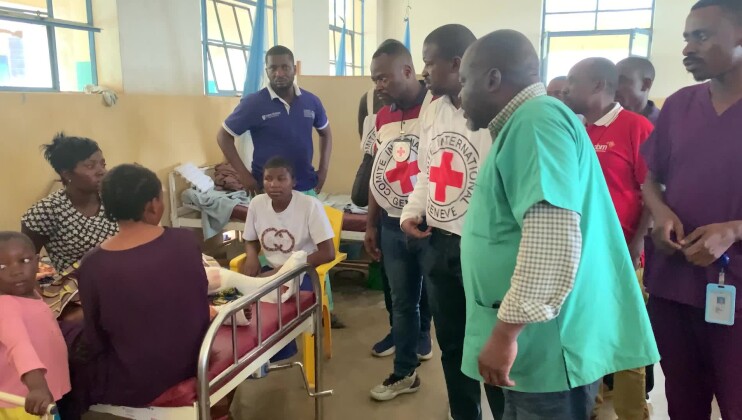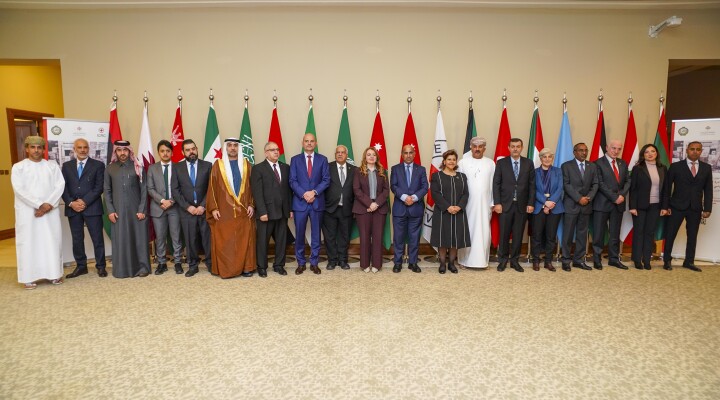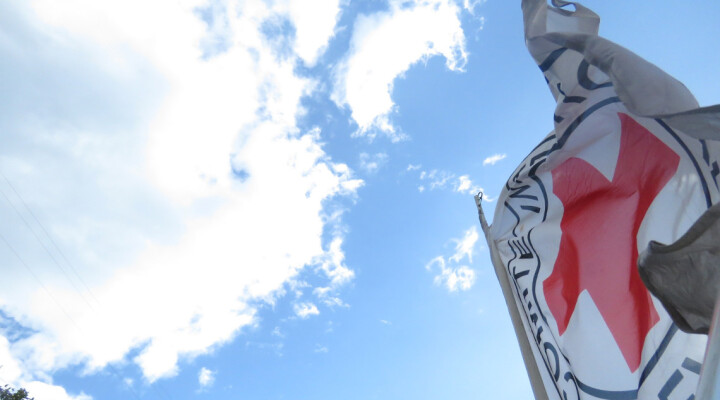Somalia: Hundreds of thousands suffer from the most severe drought in the last decade
Somalia is the most drought-affected country in the Horn of Africa. This is the third and the most severe drought in the last decade. The situation is alarming, and it is deteriorating. Isolated areas of Somalia, especially villages and settlements in central and southern regions are the most affected. In a hope that the situation is better in bigger centers and towns, elderly, women and children take on the long and excruciating journey there to search for any help.
“There were problems and hunger where I came from. There is nothing but hunger. Health is important but people are hungry. There's no rain. We left in search of treatment but there is hunger. There is no rain”, says Fadumo Ali Mohamed.
Faduumo made the trip from her village near Jamame area, and she had to spend two nights on the road with her three children, one of whom was gravely ill. The arduous journey involved moving in and out of territories controlled either by the government or armed groups. This presents its own challenges but the cost of making the trip in the current “drought economy” is the first barrier of access that potential patients are likely to run into.
“Before, 75 per cent of the patients were from the rural villages. Now, most of the patients are from Kismayo area. This is because they could afford transport to the hospital since they had their crops and animals and there was no drought. Now they can't afford transport to the hospital. This has caused the sick children to remain in the village and only those critical are brought in. Some of them have told us that their children died due to lack of transport,” says Feisal Adan Ibrahim, who supervises operations of the stabilization center in Kismayo General Hospital.
Malnutrition and measles cases are increasing, and people need health support.
Faadumo Ali Mohamed’s two-year-old daughter, Ikraan Abdiaziz, was admitted to the Kismayo stabilization centre in mid-February. She was severely malnourished, and her tiny frame was puffed up by oedema - fluid retention in the body.
“I brought my daughter here and she was all swollen. I'm staying with her and she is getting treatment. She is still a bit tired, but the swelling is not as bad as it was,” says Faadumo while seated with her daughter in the ICU wing of the stabilization center.
Majority of patients in the stabilization centers are from displaced families who settled around the towns while others are from further out in the rural areas.
“We see a lot more people coming to the stabilization centre. We are seeing more malnourished children. But our biggest worry, and we are getting reports, is that the situation is far worse in the rural areas and there are no health services. That's our biggest worry right now,” says Mohamed Abdi Dagane, who is a member of the International Committee of the Red Cross (ICRC) team based in Kismayo.
Burgeoning displacement camps around the towns due to the current drought climate compound the problem. Food, water, health, and sanitation services are stretched in these settlements. In Somalia’s capital, Mogadishu, for instance, there were over 120,000 new arrivals in the camps since January. Overall, access to healthcare in Somalia remains very limited, particularly in rural areas, which leaves the extent of the malnutrition crisis unclear.
Humanitarian organizations mandated to provide help to children forecast that 1.4 million children, nearly half of Somalia’s under five population, are likely to suffer from acute malnutrition because of the ongoing drought. The ICRC supports both stabilization centers in Kismayo and Baidoa as well as 16 Somali Red Crescent Society (SRCS) clinics that offer nutritional support for families in need.
SHOTLIST
Length: 5’13’’
Location: Kismayo, Somalia and Mogadishu, Somalia
Date of Filming: Kismayo 26th February, Mogadishu 24th Februrary
Copyright: ICRC access all
On Screen Credit: ICRC written, or logo attached to story
00:00 - 00:05 Istar Mohamed feeds her daughter nutritional milk using a nasogastric tube at the Kismayo stabilization Centre ICU ward.
00:05 - 00:09 Saynab Yussuf feeds her son, Mohamed, nutritional milk using an nasogastric tube at the Kismayo stabilization Centre ICU ward.
00:09 - 00:17 Faadumo Ali feeding her two-year-old daughter, Haawo, at the Kismayo stabilization Centre ICU ward.
Faadumo Ali quote:
00:17 - 00:21 There were problems and hunger where I came from. There is nothing but hunger. We came here for treatment.
00:23 - 00:25 There is hunger. There is no rain.
00:25 - 00:28 People are fleeing because of hunger. There is nothing.
00:28 - 00:31 People can't sustain their daily lives.
00:31 - 00:36 I brought my daughter here and she was all swollen.
00:36 - 00:39 I'm staying with her and she is getting treatment.
00:39 - 00:43 She is still a bit tired but the swelling is not as bad as it was.
00:43 - 00:45 I'm yet to be discharged.
00:45 - 00:50 IDP Camp in Daynile District, Mogadishu.
00:50 - 00:55 Sahra Kulow and her children in Mogadishu's IDP Camp in Daynile District.
00:55 - 00:59 Sahra Kulow serving lunch at the camp.
00:59 - 01:04 Sahra Kulow and her family having lunch at the IDP camp.
01:04 - 01:08 IDP Camp in Daynile District, Mogadishu.
Feisal Adan Ibrahim quote:
01:08 - 01:10 When compared to the previous months,
01:10 - 01:13 the numbers of patients in the Stabilization Centre is rising.
01:14 - 01:17 The reason being, from November until now,
01:17 - 01:21 Lower Juba and Middle Juba regions are experiencing drought.
01:21 - 01:25 And most of the patients here are from Lower Juba and Middle Juba.
01:25 - 01:30 These patients come in malnourished and with complications.
01:30 - 01:35 And immediately they arrive, they come straight to the stabilization centre.
01:35 - 01:38 Ali Yussuf Ibrahim, staff at the center, prepares nutritional milk formula for malnourished children admitted at the stabilization center in Kismayo General Hospital.
01:38 - 01:41 Ali mixes nutritional formula powder with hot water.
01:41 - 01:45 Ali stirs the mix.
01:45 - 01:50 IDP Camp in Daynile District - Mogadishu
Feisal Adan Ibrahim quote:
01:51 - 01:56 Before, 75 per cent of the patients were from the rural villages.
01:57 - 02:01 Now, most of the patients are from Kismayo area.
02:01 - 02:06 This is because they could afford transport to the hospital
02:06 - 02:12 since they had their crops and animals and there was no drought.
02:12 - 02:16 Now they can't afford transport to the hospital.
02:16 - 02:23 This has caused the sick children to remain in the village and only those critical are brought in.
02:23 - 02:28 Some of them have told us that their children have died due to lack of transport.
02:28 - 02:40 Mothers and caregivers with children receive nutritional milk dosage at the stabilization centre in Kismayo General Hospital.
Feisal Adan Ibrahim quote:
02:40 - 02:45 We used to experience high numbers in May, June, and July.
02:45 - 02:56 But we haven't seen six or more consecutive months of high malnourished patients before.
02:56 - 02:58 The drought is worsening.
02:58 - 02:59 This never used to happen.
02:59 - 03:01 New displacement camps were not being created.
03:01 - 03:06 There are now new camps that have been setup in Kismayo.
03:06 - 03:10 Every day we admit around six patients who have been referred here.
03:10 - 03:13 And they are coming from that area.
03:13 - 03:15 At least they receive food at the camps.
03:15 - 03:18 But for the people who live in Jamame, Jilib, and Buale area
03:18 - 03:20 No one is giving them food.
03:20 - 03:23 They don't not have access to nutrition services.
03:23 - 03:25 They don't have access to health services.
03:25 - 03:29 They don't get emergency humanitarian assistance.
03:29 - 03:35 This causes a continuous malnutrition crisis.
03:36 - 03:43 The outside wall of Kismayo General Hospital
03:43 - 03:47 Shot of the Kismayo General Hospital gate from the inside.
03:47 - 03:51 Entrance to the phase one ward of the stabilization centre
Faadumo Ali quote:
03:51 - 03:54 My daughter is much better now, and the swelling has gone down.
03:54 - 03:58 She is a bit tired, but the swelling has gone down.
03:58 - 04:04 She is still swollen but it is not as bad as it was.
04:04 - 04:12 Faadumo Ali with her daughter at the ICU wing of the stabilization centre in Kismayo General Hospital.
Abdi Dagane quote:
04:12 - 04:16 The situation here is very desperate.
04:16 - 04:22 We see a lot more people coming to the stabilization centre.
04:22 - 04:24 We are seeing more malnourished children.
04:25 - 04:32 But our biggest worry, and we are getting reports, is that the situation is far worse in the rural areas.
04:32 - 04:34 And there are no health services there.
04:35 - 04:37 That's our biggest worry right now.
04:37 - 04:52 Human traffic in the outskirts of the IDP Camp in Daynile District, Mogadishu
04:52 - 05:02 Shot of IDP Camp in Daynile District, Mogadishu.
05:02 - 05:13 Seynab Haji Yaaqub feeds her children at the IDP Camp in Daynile District, Mogadishu.
Ends



